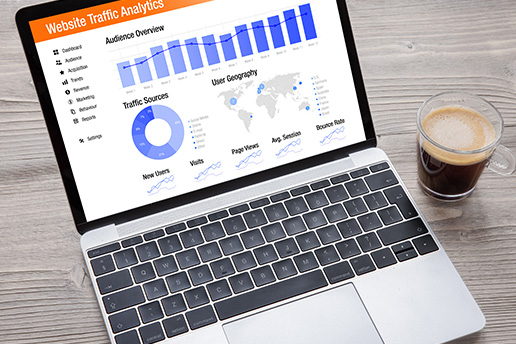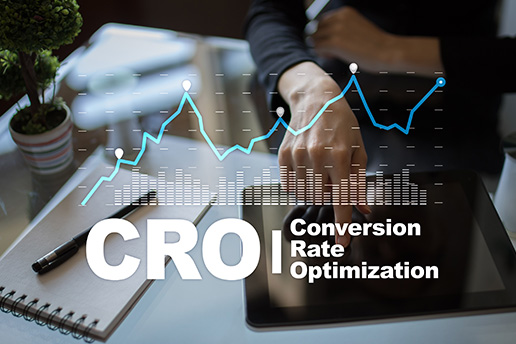With an increasing demand for businesses to have an online store, it is of utmost importance to ensure that the e-commerce website performs flawlessly. It means that the website must effectively rank a significant number of products across hundreds of different categories.
So with so many items to display, an e-commerce site tends to have many pages. Handling all those pages is a part of the many e-commerce challenges these websites face. Due to the enormous size and complexity, optimizing an e-commerce website is a tough job requiring technical SEO skills and knowledge.
Technical SEO is important for every kind of website, but even more so for e-commerce websites. It is because they face technical challenges unique to the typical search engine optimization issues seen across other sites.
Let’s go ahead and discover some of the most common technical SEO challenges for e-commerce sites and how to tackle them.
List of Top 5 Common Technical SEO Challenges for E-commerce Websites
1) Improper Site Indexing:
Have you tried searching for your company website on Google and couldn’t find it listed there?
Well, if that is the case, then there must be an issue of improper site indexing.
Without proper indexing of your website, Google search results will not be able to display your site because it is invisible to them.
Checking the website indexing is an essential component of the technical SEO checklist. You can do this by typing “site:yoursitename.com” on the Google search bar. Google will provide you with the number of live web pages that have gotten indexed on your website.
Once you check for indexing, as stated above, you can tackle it in the following ways:
- During a search on the search engines, if many pages not related to your website show up, it could most likely mean that your site has got hacked. If this happens, there will be a significant number of spam files, and you will have to engage a software developer to clear them out for you as part of the technical SEO checklist.
- Another possibility of many results showing up on the search engine results page could be that older versions of your website are still indexing. Again, you will have to take the help of programmers to remove them so that they longer get listed on Google.
- When no indexing gets done for your website, it means that none of the pages will appear on Google search results. So what you have to do is submit your site URL on the Google search box. This way, you let Google and all the other search engines know that your website exists on the internet.
- In the event that you find a much lesser number of pages listed on the search engines, inspect the indexed pages and compare to see if the pages you want to index are present. Still, if you face technical challenges and can’t find why your web pages are not indexing, consult the Google Webmaster Guidelines for compliance adherence.
- Other reasons for your file not indexing on Google search results could be due to the presence of codes “robots.txt” or NOINDEX” on the page source. If any of these codes exist, you have to ask a software programmer to remove them from the website pages.
2) Page Loading Speeds are Slow:
The loading speeds of your e-commerce web pages are one of the primary factors that search engines consider to rank your page. If your website is too slow, your competitors can beat you as visitors to your website will move on from your online store.
On your technical SEO checklist, ensuring faster page loading speeds is critical to rank on Google. Getting your website optimized for Google will make your site faster and even ensure that you have better conversion rates than your competitors.
There are many ways to speed up your website, and some of the things you can do to do this are:
- The page loading speed of your website increases when you enable compression. This process involves working on the server settings of your e-commerce website, and you should get a software developer to look at the configurations.
- Optimizing the images you use on your web pages to handle the technical challenges of slower websites can help increase the loading speed. The things you need to take care of while doing this is to reduce the size and definition of the photos but not let the quality down.
- Investing in a CDN or customer delivery network is an excellent way to improve page loading speeds. The CDN will help your website get loaded on the customer’s devices from the closest servers, giving them a faster site loading experience.
3) Using HTTP Instead of HTTPS:
With the advancement of the World Wide Web network, security has become a prime factor for users. Therefore, people prefer to enter and use a website that provides the best security features. You can consider this fact one of the e-commerce challenges of an online store where monetary transactions occur.
You must upgrade your website to HTTPS from HTTP to address this factor. Even Google lists secure sites with HTTPS higher on the search results page than an HTTP website. However, they may not even index a site that is not HTTPS as these sites have no encryption making their credibility considerable doubt.
Visitors searching for your website will avoid it as Google marks HTTP sites in red, flagging them as non-secured. Therefore, it would be in your best interest if you did not use any passwords on such sites nor provide any credit card details, as the chances of theft are high.
If you want your e-commerce website to tick this technical SEO checklist, then convert to HTTPS by:
- Getting an SSL certificate from a certification authority and installing it to make your website HTTPS from HTTP.
4) Inconsistent or Complicated URLs:
The use of an enormous number of URLs is very common and essential for e-commerce websites, as many products need to get listed on the site.
Complicated URLs that look messy are difficult for search engines to index and rank. Therefore, it is important to keep the structure of the URL consistent and simple. A clean and not-too-long URL tells users and search engines where they are on the site. It supports ranking and boosts the click-through rate of your web pages.
Let’s have a look at the technical SEO checklist best practices to tackle this issue:
- It is a best practice to keep your web page URLs concise, consistent, and logical, which everyone can easily understand, including Google.
- Keep the URLs simple and use hyphens to separate multiple words consistently.
- Use relevant keywords to the page URLs that best relate to the products of your e-commerce site, as it will enable higher ranking on search engines.
- Most of the servers usually do not always pass on websites using the lowercase to uppercase URL and, therefore, always use lowercase letters to let the search engines understand them better.
- It is vital that you clean up the URLs of your e-commerce website, as it is one of the technical challenges that can eat up your crawl budget.
5) Your XML Sitemap is Missing:
If you want your web pages to crawl on search engines, you must have XML sitemaps. These sitemaps inform the search engines about the necessary web pages of your site that need indexing and crawling. Thus, you should ensure that every live web page comprises the right XML protocols.
When you have an e-commerce website with a multitude of pages, keep in mind to include all the essential pages in the XML sitemap so that Google can index them and ascertain that they crawl efficiently.
As a part of the e-commerce challenges that your online store faces, you can tackle this issue of missing XML sitemaps by:
- Take the assistance of different plug-ins or web design hosting websites to create a sitemap for your e-commerce site web pages. This step will ensure that site index crawlers can index your pages and get them to rank high on search engines.
- If your sitemap is busted, gone (where you can see a 404 error), or obsolete, take the help of software programmers and create an up-to-date sitemap for better crawling and indexing of your pages.

Conclusion
It’s difficult to identify technical challenges for your e-commerce website that involves SEO. Work on your technical SEO if your website routinely performs poorly in the SERPs and is unable to rank. Prioritize fundamental tasks like crawling and indexing before addressing other challenges on your site.
The majority of the issues and solutions suggested above are simple to implement. You’ll notice considerable improvements to your e-commerce site’s ranking once you take care of these challenges.









